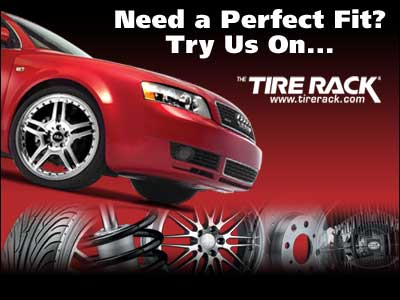
Hey…Where’s the spare?
You’ve just fallen in love with the new 2005 (insert the name of your favorite new vehicle here) at the auto show. It’s just what you want. You look in the trunk and marvel at its capacity. Then you realize one reason it has such a cavernous trunk is because you don’t see a spare tire! After tapping the trunk floor and sides to see if anything is hidden there, you realize there aren’t any provisions for a spare! Where’s the spare? It’s gone. Your dream vehicle is either equipped with an aerosol can of tire sealant (that’s a reassuring thought) or run-flat tires.
There are few products that are placed in harms way more often than tires. They face extremes in temperature, exposure to the elements, and attacks by road debris. And while refinements have improved tire durability and longevity, only recently have tire manufacturers developed products that help maintain vehicle mobility after a tire has lost air pressure. While Great Grandfather’s car was designed to carry multiple spare tires to accompany him on trips, your next vehicle may not be designed to carry any.
Why would the vehicle manufacturer do away with the spare tire? Aren’t there still nails and screws lying on the road just waiting to be picked up by tires? Sure, but vehicle manufacturers say that reducing vehicle weight while increasing packaging efficiency and fuel economy (even comparing four run-flat wheels & tires to five standard wheel & tires) is encouraging them to eliminate the spare and/or specify run-flat tires. Consumers acknowledging the sense of security that run-flat tires provide also encourages vehicle manufacturers.
Run-flat tires allow the driver to depart uncomfortable surroundings and typically offer a 50-mile range to decide when and where tire repair or replacement will occur. Come to think of it, while I’m not fully comfortable without a spare, there are places and times I would be less comfortable pulling over to change a flat. Maybe the run-flat tire solution isn’t a bad one?
Today there are two run-flat tire technologies being developed to help maintain vehicle mobility after a tire has been punctured. Of the two, self-supporting tires are available now, while auxiliary supported systems are on the drawing boards for use as Original Equipment in the near future.
Self-Supporting
Self-supporting run-flat tires feature a stiffer internal construction that is capable of actually temporarily carrying the weight of the vehicle, even after the tire has lost all air pressure. These tires typically sandwich rubber between layers of heat resistant cord in the sidewall to help prevent the sidewalls from folding over on themselves in the event of loss of air pressure to give the tires "self-supporting" capability. They also feature special beads that allow the tire to firmly grip current Original Equipment and aftermarket wheels even in the event of air loss. Because self-supporting tires are so good at masking the traditional loss-of-air symptoms that accompany a flat tire, they require a tire pressure monitoring system to alert the driver that they have lost air pressure. Without such a system, the driver may not notice underinflation and may inadvertently cause additional tire damage by failing to inflate or repair the tire at the first opportunity. Typically self-supporting tires maintain vehicle mobility for 50 miles at speeds up to 55 mph. Today’s Original Equipment tire suppliers have taken the lead in run-flat tires and include Bridgestone, Dunlop, Goodyear, Michelin and Pirelli
Auxiliary Supported Run-Flat Systems
Auxiliary supported systems combine unique wheels and tires and are currently under development for use on future Original Equipment vehicle applications. In these systems, the tire rests on a support ring attached to the wheel when air pressure is lost. The advantage to this type of system is that it will place most of the task of providing run-flat capability on the wheel (which doesn't "wear out" or need to be replaced), and minimizes the responsibility of the tire (which does require periodic replacement). Additionally, auxiliary supported systems promise better ride quality because their sidewall's stiffness can be equivalent to today's standard tires.
Currently, only a few European vehicles (not imported into the United States) used Michelin's PAX System. Goodyear and Pirelli have announced that they also will develop run-flat tires based on PAX System technology.
The disadvantage to auxiliary supported systems is that their unique wheels will not accept standard tires and that their lower volume will make this type of system more expensive.
It is too early to confirm which system, if either will be widely accepted by vehicle manufacturers and consumers in the future.
For those drivers already sold on the run-flat systems, The Tire Rack sells run-flat tires. Select yours by vehicle here.